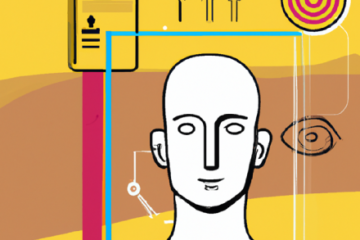Jim Tincher: Tomorrow Came Early – How COVID Has Spurred Digital Transformation in CX
VOICE OF EXPERTS
Tomorrow Came Early – How COVID Has Spurred Digital Transformation in CX

You’d be hard pressed to find some facet of our lives that hasn’t been impacted by the coronavirus pandemic. How we socialize, work, shop, dine, travel, educate our children – none of those activities are untouched. “Unprecedented” has to be a lock for 2020’s Word of the Year.
Customer experience is no exception. And the changes keep coming, with some systems and procedures evolving virtually overnight. (Always aiming for efficiency, I’m using “virtually” in both senses of the word: changes are being made rapidly, and changes are being made in the digital realm.)
Whether you’re ordering takeout, going to school, arranging a meeting, or capturing the voice of the customer, you’re dealing with the two fundamental capabilities this pandemic has made infinitely more complicated: coordination and communication.
Both of those are essential to successful CX initiatives, and both of those are increasingly being addressed by ramping up digital capabilities, particularly in the arena of artificial intelligence (AI).
It’s not just a matter of implementing plans to upgrade digital capabilities; it’s now critical to accelerate those plans. As one business leader put it succinctly: “When it comes to digital, our 2030 goals became our 2020 goals.”
As costly or inconvenient as it may be, we all need to embrace the reality that there’s no time to waste.
It’s essential for CX professionals to make sure that they’re included in the strategy sessions around technology that are happening in their companies. And not just because your competitors are having the same conversations (though that’s a point you ignore at your peril).
The primary reason CX needs to be involved is because digitizing a broken process just leads to a broken digitized process. In other words, without moving forward based on what your customers actually want and need, you risk investing a lot of time and money to succeed only in frustrating them more quickly and efficiently!
When a sense of urgency is propelling your actions, as it is for many now, the risk of that kind of costly misstep only increases.
But this caveat for inclusion works both ways. It’s not just a matter of making sure CX is included in planning, it’s also on CX pros to make sure they’re including the right people in their strategies, too. Involving a broad, cross-functional team is essential to building the traction and buy-in your CX program needs to drive customer-centric change throughout your organization. Not incidentally, it’s also key to demonstrating the ROI of your initiatives to the C-suite.
I’ve explained why it’s important to forge connections with Finance in the past, and suggested finding a buddy there you can take to lunch. It’s now more important than ever to befriend someone in IT, too.
You’re likely going to have to try even harder to accomplish this, because the days of connecting over the water cooler are over (for now, if not long-term). You’re not crossing paths with co-workers in the hall or chatting before you walk into a meeting. It’s time to utilize new tools to make those connections, and given social distancing and workplace restrictions, those tools need to be virtual.
Such connections are not only critical for launching your programs on strong footing, they’re key to carrying them out. Manual processes are breaking down. You can’t come up with initiatives to improve them, toss them over the wall, then expect IT to run with them. IT has to have a seat at the table from the start, even if the “table” itself is now virtual, too.
Unfortunately, there are no cookie-cutter answers to the problems facing businesses today. Not only because there’s no blueprint from past experience we can use to navigate this “new normal” (or “new abnormal,” as we’ve never dealt with anything quite like this before), but because there are no one-size-fits-all solutions anyway.
Without best practices to guide you, instead seek out best-for-your-circumstances practices – those that are ideally suited to your unique situation and challenges.
AI likely holds the key to providing the agile, flexible, responsive tools you need right now.
Customer journey mapping must still be the cornerstone of any serious CX program. It provides the key data you need to proceed wisely. But AI is what’s required to orchestrate the journey after you’ve mapped it.
Journey management platforms allow you to monitor the customer experience you’re providing in real time, efficiently modify your initiatives as needed through A/B testing, and design interventions that produce tangible results, such as reducing churn and increasing engagement. That’s what today’s ever-changing environment calls for.
Make sure, however, that you deploy technology effectively, not recklessly. Customers are still seeking a human connection, especially when specialized expertise is called for. So by all means, increase productive automation in your call centers, for example – just make sure human beings are available and easily accessible for customers who want or need that option.
It’s hard to envision at times, but there is an “other side” to this global crisis. And we’ll get there, eventually.
But when we do, the technological landscape in CX is likely to be transformed…and for the better. Our ability to improve experiences for customers, and outcomes for companies, will be enhanced and optimized through digital innovations we might otherwise have waited years to benefit from.
Jim Tincher, CCXP, is a nationally recognized customer experience expert, journey mapper, author, and speaker. His innovative CX consultancy, Heart of the Customer, helps companies of all sizes drive customer-focused change to improve loyalty and boost revenue, and his book, How Hard Is It to Be Your Customer?, is considered a must-read for CX-focused leaders.



